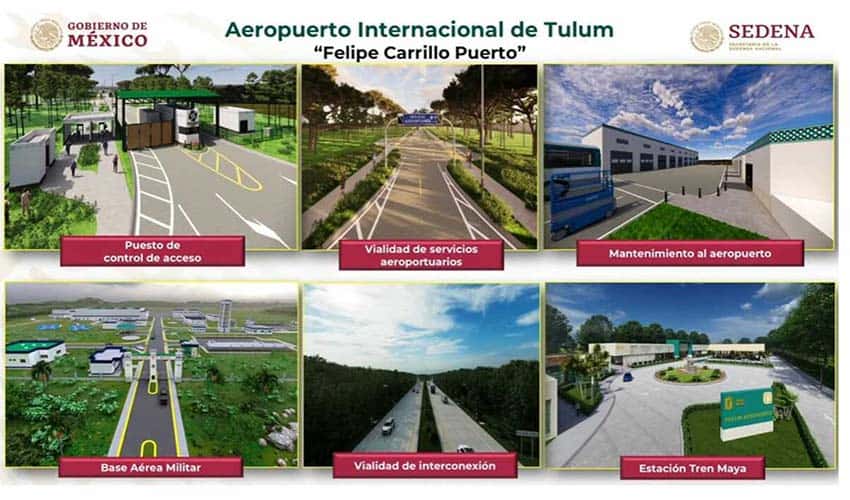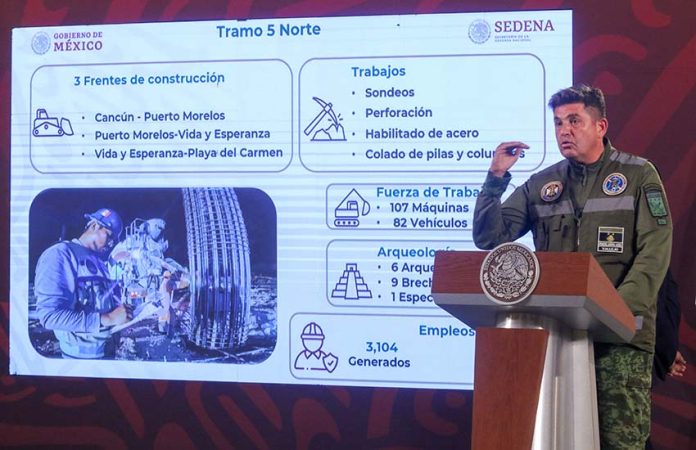The planned Tulum International Airport will have a Maya Train station and a military base on its premises, federal officials told President López Obrador’s daily press conference on Monday.
The station to be located at the airport will be a stop of the on the 256.8 km-long Section 6 of the Maya Train, which will travel between Tulum and Chetumal. It is being built by the Defense Ministry (Sedena).
In addition to the airport station and the one in Chetumal, the route will also have stations in Bacalar and Othón P. Blanco and a stop in Limones.
During a report on the progress of the Maya Train’s construction, Sedena military architect Gustavo Vallejo Suárez also told reporters that the Tulum airport — expected to start operations in 2024 — will have a capacity of 5 million passengers per year. About 75% of those 5.5 million would be international travelers, he predicted.
The planned airport, to be built on a 1,500-hectare parcel, will have a 3.7 km runway with a Category 1 instrument landing system and high-tech navigation aids and will see up to 32,000 annual air operations in its first phase, Mexico’s federal tourism agency Fonatur head Javier May said during the press conference.
“It will also have a platform with 13 positions for commercial aircraft, both domestic and international flights, and an additional platform for general aviation and executive aviation that will have 28 positions, as well as a storage hangar with another 12 positions or spaces for executive aircraft,” Vallejo said.

The government’s stated purpose for building the airport is to relieve congestion at the popular Cancún International Airport and bring economic development to Tulum.
Vallejo also emphasized that the airport will be “green” as it is following the environmental recommendations of the International Civil Aviation Organization.
“This project will satisfy the growing demand of passengers who visit [Cancún] in the south of the Riviera Maya,” Vallejo said. “Its infrastructure and operational potential classify it as a category 4 ECO airport — that is to say that all the aircrafts that arrive and leave our country can operate at this airport.”
He also touted what he billed as the airport’s unrelated benefits to the surrounding community.
“This airport will have a wide range of airport services, in addition to a multipurpose military air base, to strengthen the security and surveillance of the national airspace, assist the population in cases of disasters and attend to forest fires,” he said.
Local activists, however, have complained that the project poses environmental threats to the area and complained that the federal government’s public consultation on the project in January was a sham, as construction was already underway.
With reports from El Universal and Forbes México.
